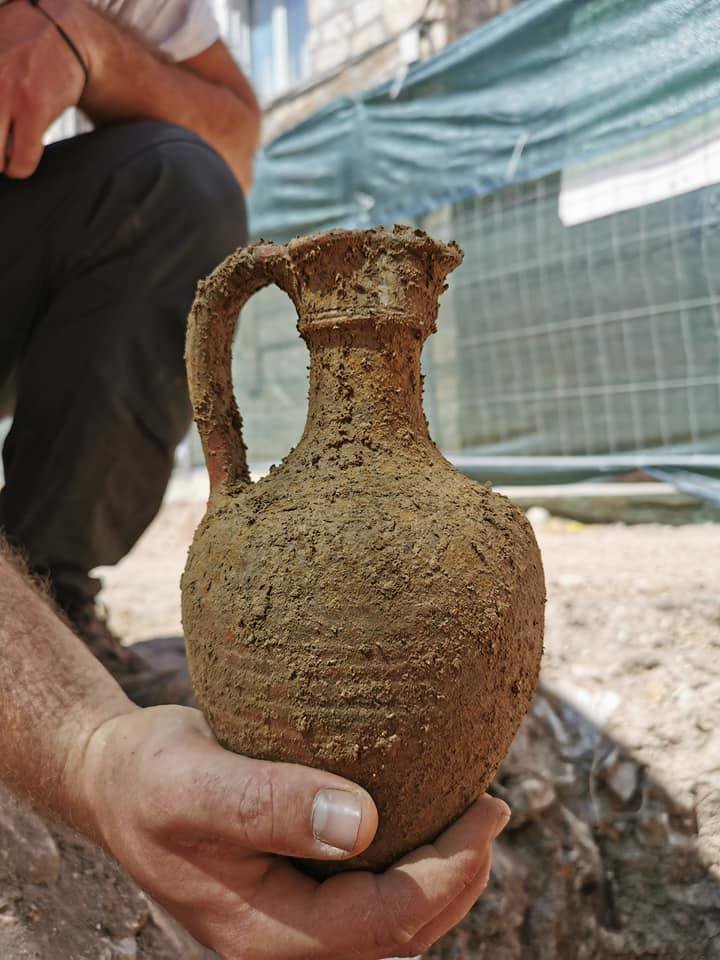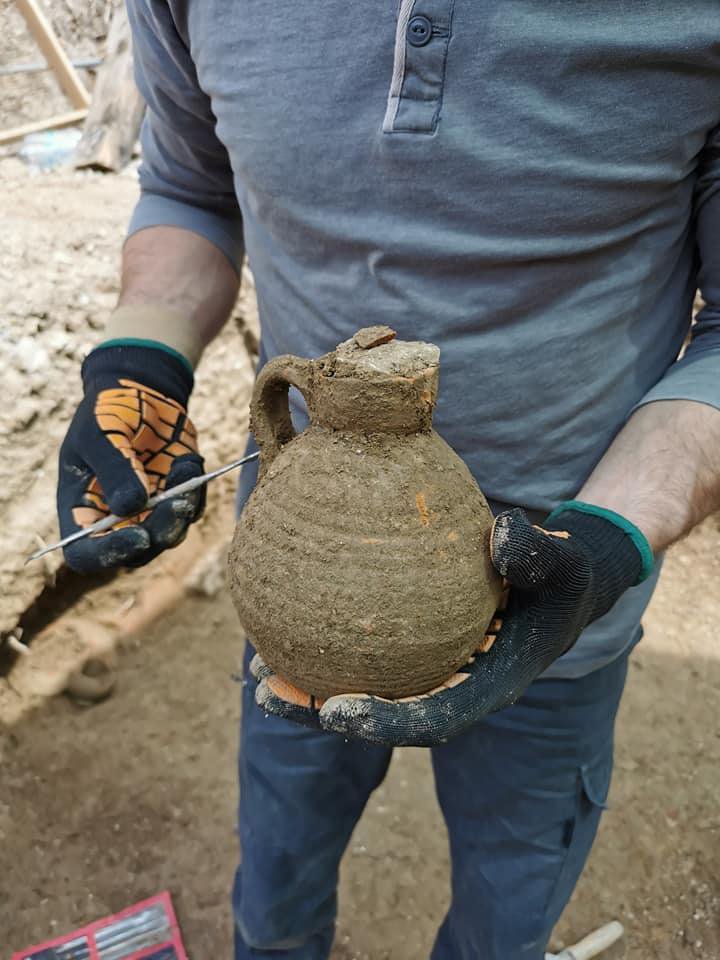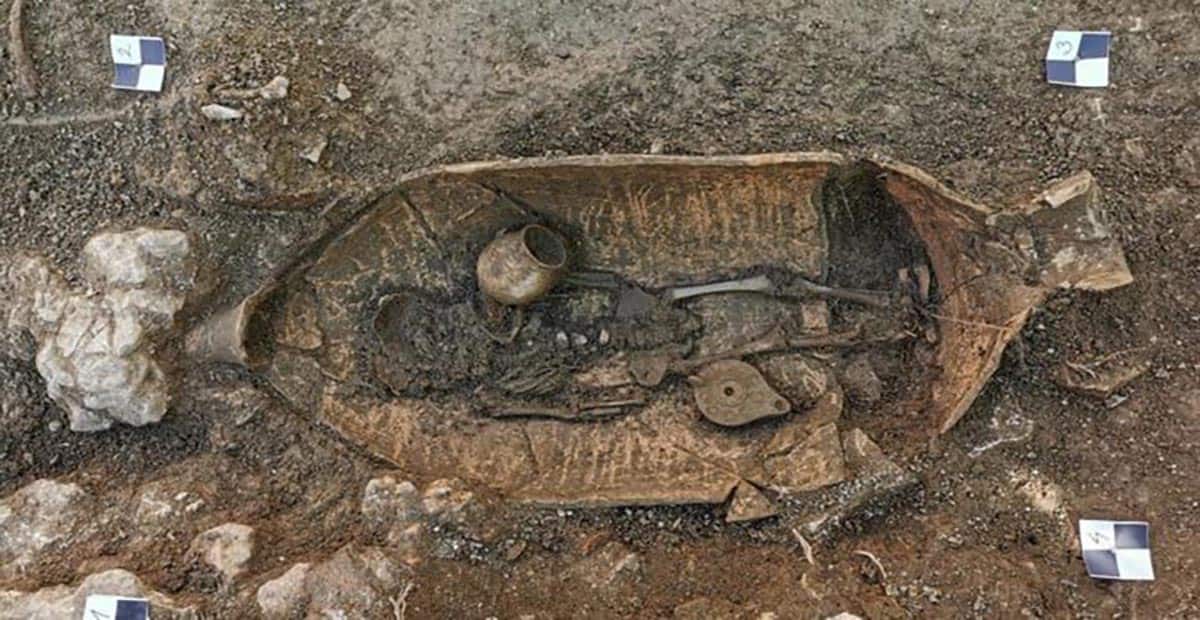Ancient Necropolis Discovered in 17th-Century Croatian Palace’s Garden
Archaeologists on the Croatian island of Hvar have unearthed an Ancient necropolis, or vast burial ground, dated to between the fourth and fifth centuries A.D.
As local news outlet Croatia Week reports, the team found the burial ground in the front garden of the Radošević Palace, a 17th-century Baroque building on the western end of the island.
Archaeological consulting company Kantharos spearheaded the dig and has spent the past two months examining the site ahead of the construction of a new library and reading room.
According to a statement, the researchers discovered 20 graves containing the skeletal remains of 32 people in an area spanning some 700 square feet.

They also found a fragment of a stone wall dating to the second century A.D. and a city gate dating to the late fifth century.
Other highlights included amphorae (jars used mainly for transporting wine and olive oil), ceramic jugs and lamps, glass bottles and containers, and coins.
These discoveries, says Kantharos in the statement, per Google Translate, have prompted researchers to call the palace “the most important and richest site” on Hvar.

As per Encyclopedia Britannica, Hvar has been inhabited continuously since the early Neolithic period. Greek settlers founded colonies on the island in 385 B.C., but by 219 B.C., the Romans had seized control of the area. Slavic groups fleeing the European mainland arrived on Hvar in the seventh century A.D.
Built between 1670 and 1688, the palace itself served as the local seat of the wealthy Radošević family, wrote scholar Ambroz Tudor, who was part of the Kantharos team, in a 2022 study.
Its accentuated balconies and “lavishly decorated façade openings” make the estate a stunning example of Baroque architecture, Tudor added.

Inside the newly excavated necropolis, experts found burials ranging from simple structures to elaborate tombs outfitted with roof tiles, writes Jesse Holth for ARTnews. Per the statement, the remains were exceptionally well preserved, with some of the skeletons interred in large jars alongside grave goods.
This unusual funerary ritual appears regularly in the archaeological record, but scholars remain unsure of the practice’s purpose. Reporting on a similar find made on the Mediterranean island of Corsica earlier this year, Amanda Morrow of Radio France Internationale (RFI) noted that such burials were generally reserved for infants or children. (The ages of the individuals buried in amphorae on Hvar remain unclear.)

“You might go to the practical thing and say that the bodies were so fragile, [maybe] they felt the need to protect it from the environment, even though it is dead,” Yoav Arbel, an archaeologist who was part of a team that discovered a baby buried in a jar in the Israeli city of Jaffa, told Laura Geggel last December.
“But there’s always the interpretation that the jar is almost like a womb, so basically the idea is to return [the] baby back into Mother Earth, or into the symbolic protection of his mother.”
As Croatian news outlet Dalmacija Danas notes, one of the last finds made during the dig was the second-century wall, which was hidden at the deepest layers of the site.
Though Kantharos plans to conduct additional research to learn more about local funerary customs, the statement notes that the preliminary findings offer new insights on ceramic production and trade networks.

Researchers have previously made similar finds in the region. In 2022, for instance, archaeologists unearthed a Roman necropolis containing at least 18 graves in the Croatian harbor town of Trogir.
And last year, a separate team discovered two well-preserved, 2,000-year-old shipwrecks containing amphorae and pottery off the coast of Hvar.




